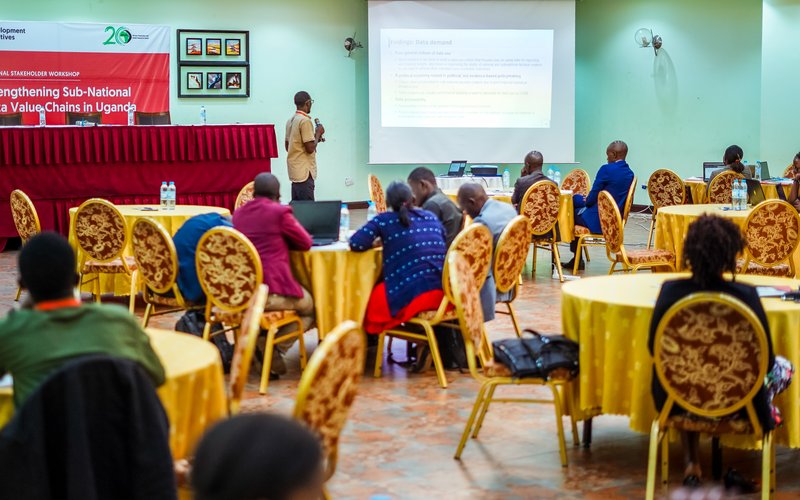Strengthening Subnational Data Value Chains in Uganda
Read more about our work to improve the effectiveness and accountability of local governments in Uganda through better use of joined-up data.
The issue
Uganda has no shortage of data. The decennial census and regular household surveys produce reliable results. Most governmental ministries, departments, and agencies (MDAs) collect routine administrative and programmatic data. And a budding innovation ecosystem has created a proliferation of data portals, apps, dashboards that all produce and seek to publish datasets. The view from Kampala looks good.
However, outside the capital, significant challenges arise. Uganda is one of the most administratively devolved countries in Africa. The number of districts has grown from 16 at independence in 1962 to the current 146, with each one running its own administration and taking responsibility for the delivery of services. These local governments have limited capacity to collect and process the data needed for effective planning and budgeting. There is also a lack of timely information to inform policymakers about household conditions, livelihoods, and welfare.
There are many data inconsistencies due to multiple centres of data production which have an impact on planning and budgeting and hence an implication on decision-making.
Hajarah Nanyanzi, Kayunga District Planner
The purpose of our work
Development Initiatives (DI) has partnered with the African Population and Health Research Centre (APHRC) to investigate these issues and propose solutions via a three-year project trialled in two districts: Masindi in the mid-west and Kayunga in central Uganda. This work is part of a larger four-country initiative led and funded by the APHRC.
The project’s objectives are as follows:
- To use joined-up data on health, agriculture, WASH (water, sanitation, and hygiene), education and youth employment to improve the effectiveness and accountability of local governments;
- To create a virtuous circle between data supply and use at the point of service delivery – this will help support decision-making, resulting in inclusive solutions and enhanced data quality;
- To generate feedback on the use of data to improve its supply;
- To ensure that data can be combined and presented in meaningful ways – this will help ensure resources are allocated to where they are most needed.
The planned approach
The project is split into three phases:
Phase 1: Data landscaping of the two focus districts
This consists of identifying all key stakeholders, detailing user needs, mapping and appraising existing data and information systems, and assessing technical and human capacity. We will focus on five sectors: health, education, agriculture, WASH, and youth development.
Phase 2: Designing and testing a low-tech dataflow prototype
This will bring together all available data (currently scattered across departments) to produce relevant information products. Extensive testing and iterative modifications will ensure the prototype meets the needs of both government official and civil society users. Once it is fit for purpose, work will begin on creating a more robust and sustainable information system.
Phase 3: Strengthening capacity and implementing an integrated information system
We will work with district technical staff to establish best practices on harmonised data production and analysis to inform policy actions. We will help them to manage and improve the information system and assist CSOs in reaping the benefits of the data. We will also promote the Ugandan Bureau of Statistics’ efforts to build districts’ capacity to produce and manage quality statistics.

To launch the initiative, DI organised a national consultative workshop in Kampala at the beginning of May. This event brought together key stakeholders to discuss current challenges and opportunities for Uganda’s data ecosystem.
[Strong data systems] are key enablers to designing, implementing, and monitoring policy more effectively and efficiently.
Dr Damazo Kadengye, APHRC Data Science and Evaluation Programme Lead